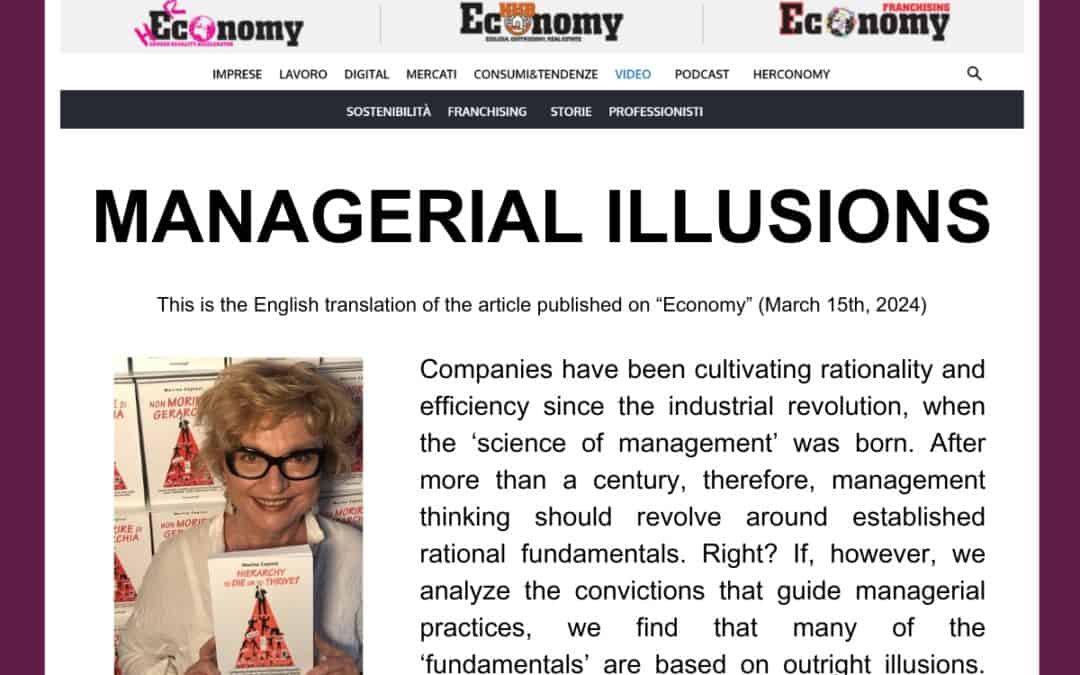By Marina Capizzi, author of Hierarchy to Die or to Thrive?
Companies have been cultivating rationality and efficiency since the industrial revolution, when the ‘science of management’ was born. After more than a century, therefore, management thinking should revolve around established rational fundamentals. Right? If, however, we analyze the convictions that guide managerial practices, we find that many of the ‘fundamentals’ are based on outright illusions. Let us analyze some of them.
In our organizations, all decisions are always taken by those in the highest position. Is this rational? No. There are decisions that could be made faster and better by those who live them every day. But here is the illusion: those at the top are better capable of making decisions. So, decisions are delegated to the ‘higher-ups’. Who find themselves overwhelmed by problems they do not know: data, analyses, meetings upon meetings. Everything slows down, and produces frustration both at the ‘top’ and at the ‘bottom’.
Another managerial illusion. If we make a plan, we will realize it. Sure, when the world was simpler, more stable and could be predicted. But now? Relying on plans is like driving while looking at the map and not the road. Yet many companies devote themselves heart and soul to writing detailed multi-year plans. Again. To work well you need a boss: why, does the boss know better than the person doing the job what has to be done? Another big illusion: if you command, people do what you say.
Consider the following two illusions (which are widespread even though few people state them): fear makes people work harder, stress is necessary for excellent results… Neuroscience shows (but we also know this because we live it every day) that fear inhibits problem solving and that stress, when it is not a healthy tension, drains resources and makes everything very exhausting.
And then there are many others… For example, considering the individual as the minimum unit of the organization, as if only individual performance exists. Bosses’ control matters more than employees’ self-control (and then we spend money on courses on engagement?). There is an internal customer… but isn’t it only the external one that pays? Now a triplet: experimenting is dangerous, performance is excellent only if there are no mistakes, and the resulting expectation of those at the “top” that those at the “bottom” should never make mistakes (as if that were possible in our world…).
We could go on.
The point is that managerial illusions become culture and, therefore, orient people, managers and non-managers alike, on a daily basis. The result? Slowness, increased costs and organizational malaise, all of which make our organizations less competitive. But is there a key unifying managerial illusions? Yes. If we analyze them in depth, we find that while different, they are all closely related and all children of one model: the traditional hierarchical model.
Can we safely afford to go on like this?
